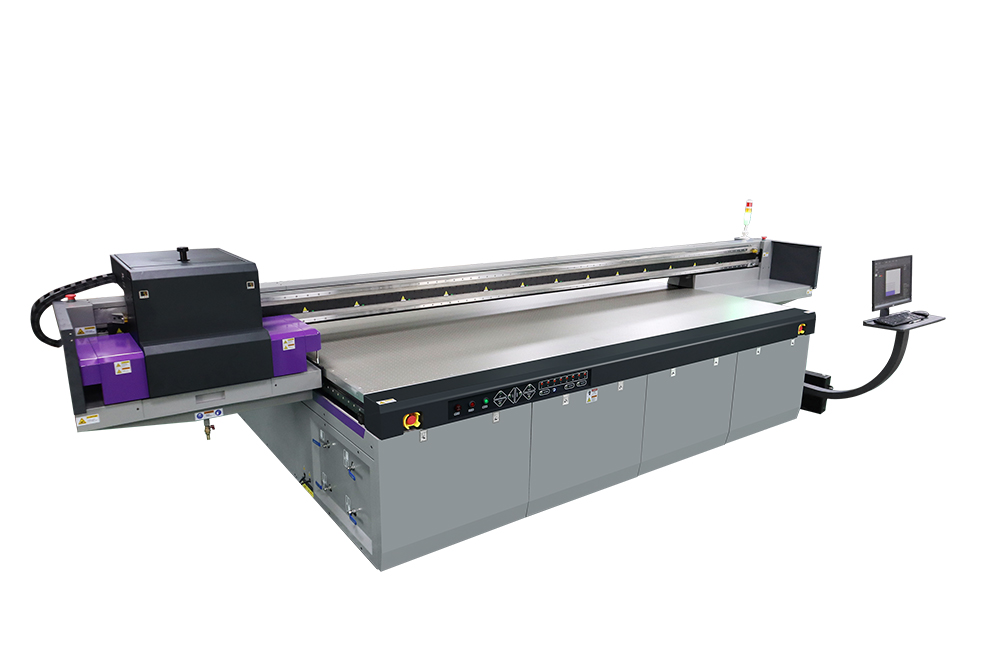UV Flatbed Printer: Managing Ink Usage and Costs
In the dynamic world of digital printing, UV flatbed printers have emerged as a game-changer, offering versatility, high-quality output, and the ability to print on a wide range of substrates. However, as with any advanced technology, managing operational costs—particularly ink usage—is crucial for maintaining profitability. If you’re a business owner, a print shop manager, or simply someone curious about optimizing your printing processes, this article will guide you through practical strategies to manage ink usage and reduce costs without compromising on quality.

Understanding UV Ink: A Brief Overview
Before diving into cost-saving tips, it’s essential to understand what UV ink is and how it differs from traditional inks. UV ink is a specialized formulation that cures instantly when exposed to ultraviolet light. This rapid curing process eliminates the need for drying time, allowing for faster production and the ability to print on non-porous materials like glass, metal, and plastics. While UV ink offers numerous advantages, it can also be more expensive than solvent-based or water-based inks. Therefore, efficient management becomes even more critical to justify the investment.
Key Factors Influencing Ink Consumption
Several factors contribute to how much ink your UV flatbed printer uses. By identifying these, you can take targeted steps to optimize consumption:
Image Complexity: High-resolution images with intricate details or gradients require more ink than simpler designs.
Print Resolution: Higher DPI (dots per inch) settings produce sharper images but use more ink.
Substrate Type: Some materials absorb ink differently, affecting coverage and usage.
Printer Settings: Misconfigured settings, such as incorrect nozzle checks or over-saturation, can lead to wastage.
Environmental Conditions: Temperature and humidity can impact ink viscosity and flow, influencing consumption.
Smart Strategies to Reduce Ink Waste
Now that you know what affects ink usage, let’s explore actionable strategies to minimize waste:
Optimize Your Designs:
Simplify complex graphics where possible without sacrificing quality. Use vector graphics instead of raster images when appropriate, as they scale better and require less ink. Additionally, leverage software tools to identify areas of your design that could benefit from color reduction or simplification.
Choose the Right Resolution:
While high-resolution prints are stunning, they’re not always necessary. For applications like signage or displays viewed from a distance, a lower DPI setting may suffice, significantly reducing ink usage. Experiment with different resolutions to find the balance between quality and cost.
Leverage Printer Features:
Modern UV flatbed printers come equipped with advanced features like variable dot printing and automated color management. These tools allow you to adjust ink density and coverage dynamically, ensuring optimal usage without manual intervention. Familiarize yourself with your printer’s capabilities and take advantage of these features.
Regular Nozzle Checks and Maintenance:
Clogged or misaligned printheads can lead to uneven ink distribution and increased waste. Schedule regular nozzle checks and cleaning cycles to keep your printer in top condition. Some printers even offer automated maintenance routines, making this process hassle-free.
Store Ink Properly:
UV ink is sensitive to light and temperature fluctuations. Store ink cartridges in a cool, dark place to prevent premature curing or degradation. Additionally, avoid leaving cartridges partially filled for extended periods, as this can lead to ink drying out and clogging the printhead.
Maintenance Tips for Long-Term Ink Savings
Preventive maintenance is key to extending the lifespan of your printer and reducing ink consumption over time. Here are some tips to keep your machine running smoothly:
Clean the Printhead Regularly:
Dust and debris can accumulate on the printhead, affecting ink flow and causing streaks or blotches. Follow your printer’s manual for instructions on cleaning the printhead, and consider using specialized cleaning solutions designed for UV ink.
Replace Worn Parts Promptly:
Components like dampers, capping stations, and wiper blades play a crucial role in maintaining ink consistency. Replace these parts as recommended by the manufacturer to prevent ink leaks, misfires, or other issues that could lead to waste.
Monitor Environmental Conditions:
Extreme temperatures or humidity can affect ink viscosity and curability. Invest in a climate-controlled environment for your printer if possible, or use dehumidifiers/air conditioners to stabilize conditions in your workspace.
Train Your Team:
Ensure that everyone operating the printer is trained on best practices for ink management. This includes proper loading of substrates, adjusting settings for different materials, and recognizing signs of ink-related issues.
The Financial Impact of Efficient Ink Management
Reducing ink consumption isn’t just about saving money on cartridges—it has a ripple effect on your bottom line. Here’s how efficient ink management can positively impact your business:
Lower Operational Costs:
Less ink waste means fewer cartridge replacements and lower ongoing expenses. This translates directly to increased profitability, especially for high-volume print shops.
Reduced Downtime:
A well-maintained printer experiences fewer breakdowns and requires less troubleshooting. This minimizes production delays and keeps your team focused on delivering high-quality prints.
Enhanced Sustainability:
By using less ink, you’re also reducing your environmental footprint. This can be a selling point for eco-conscious clients and align with your company’s sustainability goals.
Improved Client Satisfaction:
Consistent ink quality and faster turnaround times due to efficient processes lead to happier clients. Satisfied customers are more likely to return and refer your services to others.
Conclusion: A Sustainable Approach to UV Printing
Managing ink usage and costs in UV flatbed printing is a multifaceted endeavor that requires attention to detail, strategic planning, and ongoing maintenance. By understanding the factors that influence ink consumption, implementing smart strategies to reduce waste, and prioritizing preventive maintenance, you can achieve significant savings while maintaining the high standards your clients expect.
Remember, efficient ink management isn’t a one-time effort—it’s an ongoing commitment to excellence. Regularly review your processes, stay updated on the latest printer technologies, and don’t hesitate to seek advice from industry experts or fellow printers. With the right approach, you can turn ink management from a cost center into a competitive advantage, driving growth and success for your business.
